Cardiovascular and health cost impacts of cuff blood pressure underestimation and overestimation of invasive aortic systolic blood pressure
- PMID: 37466429
- PMCID: PMC7614996
- DOI: 10.1097/HJH.0000000000003510
Cardiovascular and health cost impacts of cuff blood pressure underestimation and overestimation of invasive aortic systolic blood pressure
Abstract
Objective: Hypertension management is directed by cuff blood pressure (BP), but this may be inaccurate, potentially influencing cardiovascular disease (CVD) events and health costs. This study aimed to determine the impact on CVD events and related costs of the differences between cuff and invasive SBP.
Methods: Microsimulations based on Markov modelling over one year were used to determine the differences in the number of CVD events (myocardial infarction or coronary death, stroke, atrial fibrillation or heart failure) predicted by Framingham risk and total CVD health costs based on cuff SBP compared with invasive (aortic) SBP. Modelling was based on international consortium data from 1678 participants undergoing cardiac catheterization and 30 separate studies. Cuff underestimation and overestimation were defined as cuff SBP less than invasive SBP and cuff SBP greater than invasive SBP, respectively.
Results: The proportion of people with cuff SBP underestimation versus overestimation progressively increased as SBP increased. This reached a maximum ratio of 16 : 1 in people with hypertension grades II and III. Both the number of CVD events missed (predominantly stroke, coronary death and myocardial infarction) and associated health costs increased stepwise across levels of SBP control, as cuff SBP underestimation increased. The maximum number of CVD events potentially missed (11.8/1000 patients) and highest costs ($241 300 USD/1000 patients) were seen in people with hypertension grades II and III and with at least 15 mmHg of cuff SBP underestimation.
Conclusion: Cuff SBP underestimation can result in potentially preventable CVD events being missed and major increases in health costs. These issues could be remedied with improved cuff SBP accuracy.
Copyright © 2023 Wolters Kluwer Health, Inc. All rights reserved.
Conflict of interest statement
There are no conflicts of interest.
Figures
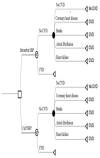
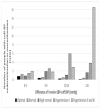
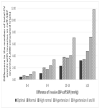
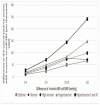
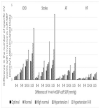
Similar articles
-
Meditation for the primary and secondary prevention of cardiovascular disease.Cochrane Database Syst Rev. 2024 Feb 15;2(2):CD013358. doi: 10.1002/14651858.CD013358.pub2. Cochrane Database Syst Rev. 2024. PMID: 38358047 Free PMC article.
-
Blood pressure targets for the treatment of people with hypertension and cardiovascular disease.Cochrane Database Syst Rev. 2022 Nov 18;11(11):CD010315. doi: 10.1002/14651858.CD010315.pub5. Cochrane Database Syst Rev. 2022. PMID: 36398903 Free PMC article.
-
Dietary Approaches to Stop Hypertension (DASH) for the primary and secondary prevention of cardiovascular diseases.Cochrane Database Syst Rev. 2025 May 6;5(5):CD013729. doi: 10.1002/14651858.CD013729.pub2. Cochrane Database Syst Rev. 2025. PMID: 40326569 Review.
-
Pharmacotherapy for hypertension in adults aged 18 to 59 years.Cochrane Database Syst Rev. 2017 Aug 16;8(8):CD008276. doi: 10.1002/14651858.CD008276.pub2. Cochrane Database Syst Rev. 2017. PMID: 28813123 Free PMC article.
-
Mobile phone-based interventions for improving adherence to medication prescribed for the primary prevention of cardiovascular disease in adults.Cochrane Database Syst Rev. 2018 Jun 22;6(6):CD012675. doi: 10.1002/14651858.CD012675.pub2. Cochrane Database Syst Rev. 2018. Update in: Cochrane Database Syst Rev. 2021 Mar 26;3:CD012675. doi: 10.1002/14651858.CD012675.pub3. PMID: 29932455 Free PMC article. Updated.
Cited by
-
2025 Heart Disease and Stroke Statistics: A Report of US and Global Data From the American Heart Association.Circulation. 2025 Feb 25;151(8):e41-e660. doi: 10.1161/CIR.0000000000001303. Epub 2025 Jan 27. Circulation. 2025. PMID: 39866113 Review.
-
Chinese Guidelines for the Prevention and Treatment of Hypertension (2024 revision).J Geriatr Cardiol. 2025 Jan 28;22(1):1-149. doi: 10.26599/1671-5411.2025.01.008. J Geriatr Cardiol. 2025. PMID: 40151633 Free PMC article. No abstract available.
References
-
- Bloom DE, Cafiero ET, Jané-Llopis E, Abrahams-Gessel S, Bloom LR, Fathima S, et al. The global economic burden of noncommunicable diseases. Geneva: World Economic Forum; 2011.
-
- GBD 2016 Risk Factors Collaborators. Global, regional, and national comparative risk assessment of 84 behavioural, environmental and occupational, and metabolic risks or clusters of risks, 1990-2016: a systematic analysis for the Global Burden of Disease Study 201. Lancet. 2017;390:1345–1422. - PMC - PubMed
-
- Picone DS, Schultz MG, Peng X, Black JA, Dwyer N, Roberts-Thomson P, et al. Discovery of new blood pressure phenotypes and relation to accuracy of cuff devices used in daily clinical practice. Hypertension. 2018;71:1239–1247. - PubMed
-
- Picone DS, Schultz MG, Otahal P, Aakhus S, Al-Jumaily AM, Black JA, et al. Accuracy of cuff-measured blood pressure: systematic reviews and meta-analyses. J Am Coll Cardiol. 2017;70:572–586. - PubMed
Publication types
MeSH terms
Grants and funding
LinkOut - more resources
Full Text Sources
Medical

